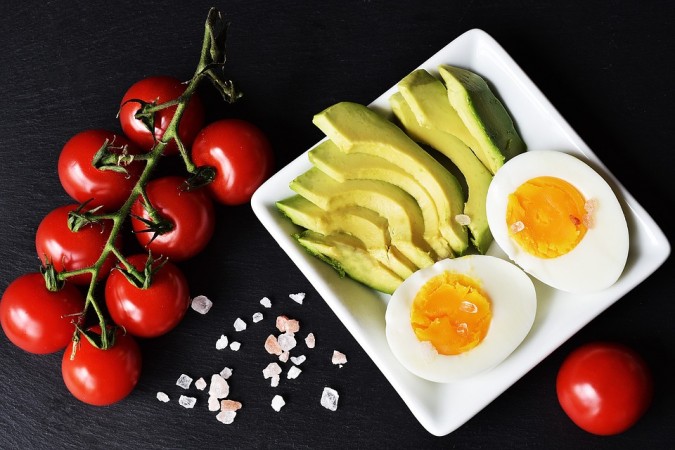Today, no diet plan is more popular than a ketogenic diet. And this popularity is not just a fluke. There are some valid reasons why people are incorporating a keto diet plan in their lifestyle. Besides its unmatchable weight loss effect, the diet is known to help people with improving their memory, mental function, and blood sugar regulation.
With all this popularity and prevalence, a lot of myths and misconceptions regarding this fat-based diet have also been developed. On the one hand, this distorted information dissuades some people from starting out on a keto diet plan. On the other hand, some individuals also face disappointment because they build unrealistic expectations with the results of the diet.
In order to make the most of a keto diet plan, it is important that one must be aware of all those misconceptions that have developed over time.
There Is a Difference Between Ketoacidosis and Ketosis
“Don’t start a keto diet, it might cause your body to produce more harmful acids”—this is the ‘medical advice’ many people like to dole out who don’t understand the difference between the two physiological terms ‘ketoacidosis’ and ‘ketosis’.
We are clearing this here once and for all: keto diet doesn’t put the body into the state of ketoacidosis. Instead, it’s ketosis that the body experiences when it’s on a ketogenic diet. It is also imperative to clear up the difference between the two.
Ketosis is simply a metabolic state when the body starts using accumulated fat to fulfill the energy needs of a plethora of physiological reactions going on within the body. In ketosis, fats actually assume the role of glucose, which is the primary source of energy in the non-ketosis state.
On the other hand, ketoacidosis is a condition that often occurs in diabetic patients. It happens when insulin level in the body dips to an extremely dangerous level and the number of ketone bodies (blood acid) is multiplied. Ketoacidosis can also end up in a fatal outcome.
It is also important to mention here that ketosis can aggravate into ketoacidosis. However, it doesn’t happen with the ketosis prompted by a ketogenic diet.
Not Everyone Has to Cut Down the Same Amount of Carbs
Everyone has unique dietary and calorie needs. Therefore, saying that a keto diet plan is one-size-fits-all is plainly wrong. In this context, many people believe that the keto diet has some kind of a set standard regarding the reduction of carbs. That’s not the case.
Everyone needs to take different amounts of carbs depending on their age, level of physical activity, health status, and genetics. For instance, some people have hereditary issues with using fat as the main source of energy. All these people, therefore, need to add a relatively large amount of carb in their diets when they are acting on a keto plan.
So, it’s better to not just commence a keto diet by reading a single blog post about it or by seeing a follower who has got the desired results.
Get the consultation of any trained nutrition if you want to get a customized diet plan for yourself. You can also learn more about keto diet plan here.
Keto Diet Is Not an X-day Challenge
People who solely take up a keto diet to reduce weight think of it as a magic potion. They tend to believe that eating keto meals will shed their extra pounds for good and then they can go back to their regular (read: unhealthy) eating habits. Keto diet is not an act of alchemy or bewitchment.
If you are starting out a keto diet then pledge to make the mantra of ‘low-carb high-fat’ part of your lifestyle. That’s the only way you can lose the extra pounds and then maintain the lost weight. Munching on carbs for straight two days after a ‘7-day challenge of keto’ is not going to bear you the desired results.
You Can’t Binge Eat Dairy and Meat Options
For many people, the main hook of a keto diet plan is that it allows them to eat a lot of foods that are usually prohibited in weight-loss diet plans. It’s true that keto diets are rich in fats, but they are not the free pass to load yourself on all sorts of fats.
For instance, saturated fats should be avoided even if you are on a keto diet. The diet gives better results when you eat more unsaturated fats that are abundantly present in some vegetables (avocado on the top of the list), seeds and nuts.
Binging on bacon, butter, and beef (all are saturated fats) is not going to provide you with the results you are expecting from a low-fat diet.
Vegetables and Fruits Can Go with Keto Diets
The majority of vegetables and fruits are completely free of fats. For that matter, many people tend to believe that there is no room for vegetated dietary options in any keto regimen. Again, this is not true. Some fruit berries in moderation are permissible in keto diets as a dessert option. Similarly, leafy vegetables are an integral part of keto diets.
There is a reason why keto experts recommend people to not quit the vegetables and fruits at all. Besides giving prescribed supply of carbs, they are rich in micronutrients including antioxidants. Also, they contain fiber. A high-fat diet can lead to constipation in the early phase of the diet. By adding some fruits and vegetables to the mix, followers can prevent the disruption of bowel movement.
Protein Should Also Be Consumed in Moderation
Many people think that a keto diet allows followers to eat everything except carbohydrates. This means they can also eat as many proteins as they like. Keto diet is definitely more lenient towards protein consumption, but that doesn’t mean you can load your meals with eggs, beef and bacon. A moderate inclusion of protein and that too through poultry and fish is what a keto diet demands.
After driving the related myths and misconceptions out of mind, one can get desired results from following a ketogenic diet plan.





